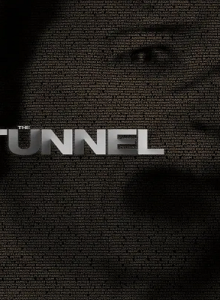The Tunnel

Movie Review: The Tunnel (Survival Drama Thriller)
The South Korean disaster movie The Tunnel investigates human survival during calamities while celebrating the human spirit. Under the direction of Kim Seong-hun viewers encounter a 2016 thriller that fuses suspenseful moments with moving character scenes together with comedic dashes. This disaster movie deviates from action-packed footage by exploring the mental and emotional ordeals of its actors which results in sharing experiences that seem both intensely real and broadly understandable.
Jung-soo (a character played by Ha Jung-woo) travels home bearing a birthday cake for his daughter at the outset of the tale. A horrible disaster struck him as the tunnel collapsed behind his car which became buried beneath a massive pile of rubble during his journey. His limited supplies include two bottles of water a cell phone and the birthday cake he’s carrying for his daughter while he waits for search and rescue. After the collapse of the tunnel, you stay with Jung-soo as he experiences panic attacks and a desperate drive that fuels his resolve.
The realism of the entire piece marks this production’s singular feature. Instead of transforming into a superhero, Jung-soo remains an ordinary person throughout the film. In this story, he represents an average person who attempts to navigate overwhelming challenges. Through believable resourcefulness and food and water conservation decisions, the movie develops a feeling of authenticity that compels the audience to sympathize with him. Through his dialogues with team leader Dae-kyung (played by Oh Dal-su), the patient audience members sense optimism amidst overwhelming despair.
Within Bae Doona’s performance as Jung-soo’s wife Se-hyun, we see another narrative unfold alongside Jung-soo’s story. Her calm perseverance to assist her husband during these chaotic times affords the movie its dramatic value. Putting yourself in her position becomes impossible because you experience everything she feels from pain to hopefulness.
The film directly targets two main aspects that critique the official procedures implemented by bureaucrats and media processes. The rescue teams face endless bureaucratic procedures and they should focus on surviving people rather than protecting official reputations. The disaster receives treatment as a television reality show genre by media organizations who focus more on contextual representations than actual cứu giúp. The pain felt authentic enough to provoke your anger.
Beyond heavier components, the plot also contains lighter narratives. Through his sarcastic humor and individual moments of levity, Jung-soo maintains a brilliant equilibrium with the dramatic tension. Small instances of human behavior help prevent the overwhelming impact of storytelling.
While Ha Jung-woo stands as the leading star after which stellar acting emerges. Through his vital and sincere portrayal of Jung-soo, you share his intense emotions during both challenges and triumphs. Bae Doona and Oh Dal-Su use their equal acting power to enhance the story’s significance.
Among other outstanding elements, the visual and audio design dominates attention. The presentation of underground isolation and claustrophobic storage proves to be a masterpiece work in the film. Under the oppressive tunnel walls, your senses experience physical and emotional compression.
Beyond being an account of disaster survival The Tunnel transcends to become an uplifting narrative about enduring power and building meaningful connections while sheltering a message of hope. Students should watch this moving film for its exciting story and deep emotional impact that also makes you think.


